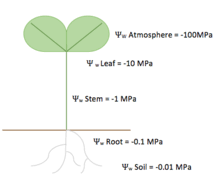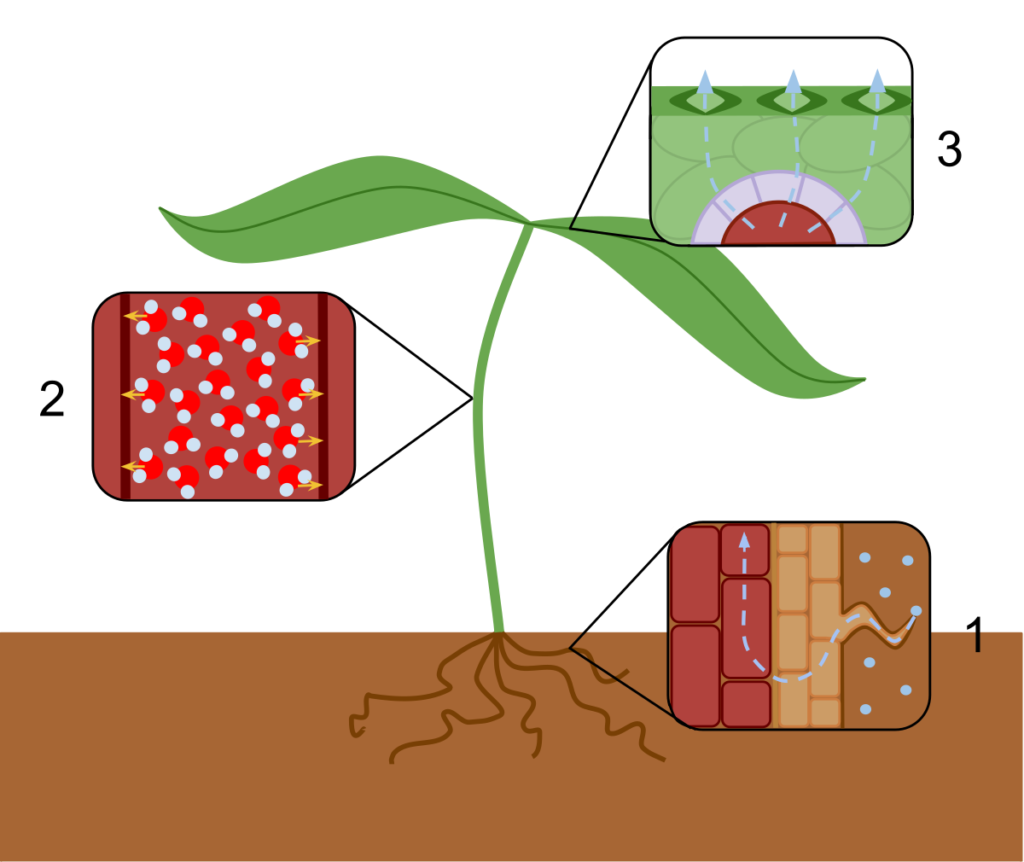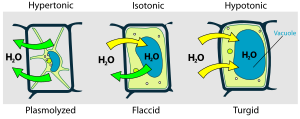Introduction
Have you ever wondered how plants survive without the ability to move or fetch water? The secret lies in their remarkable relationship with water. From the tiniest seedling to the mightiest oak, every plant has complex system for managing this vital resource.
If plants couldn’t efficiently use water. Our planet would be a barren wasteland, devoid of the abundant greenery we often take for granted. Plant water relations is not just crucial for biology students, but for anyone who cares about the environment and the future of our planet.

Water’s Role in Plants
Essential functions of water in plant life
Water plays a crucial role in plant life, serving multiple essential functions:
Structural support
Nutrient transport
Photosynthesis
Temperature regulation
Seed germination
These functions are organized and vital for plant survival and growth. For example, water provides turgor pressure, which helps plants maintain their shape and stand upright. It also acts as a medium for transporting nutrients and minerals throughout the plant.
Importance of water potential
Water potential is a key concept in understanding how water moves within plants and between plants and their environment. It is defined as the potential energy of water per unit volume relative to pure water. Water potential determines:
Direction of water movement
Rate of water uptake
Cellular processes
Component | Description | Effect on Water Potential |
Solute concentration | Dissolved substances in water | Decreases water potential |
Pressure | Hydrostatic pressure in cells | Increases water potential |
Gravity | Gravitational force on water | Affects water potential in tall plants |
Water potential helps explain phenomena such as osmosis and root water uptake, which are fundamental to plant water relations.

Water as a universal solvent
Water’s unique properties as a universal solvent are critical for plant life:
Dissolves minerals and nutrients
Facilitates chemical reactions
Enables ion movement across cell membranes
Supports enzyme function
These properties allow plants to absorb essential nutrients from the soil, transport them throughout their structures, and carry out vital metabolic processes. The ability of water to dissolve various substances also contributes to the formation of plant deplete, which is crucial for maintaining cellular functions and overall plant health.
Water’s fundamental role in plants, we can now explore the specific mechanisms of water relations within plant cells.
Plant Water Relations
Water Potential Gradient in Plants
Water potential is a crucial concept in understanding plant cell water relations. It describes the tendency of water to move from one area to another due to osmosis, gravity, mechanical pressure. In plants, water generally moves from areas of higher water potential to areas of lower water potential.
Components of water potential:
Osmotic potential
Pressure potential
Gravitational potential
Matric potential
The water potential gradient in plants drives water movement through various tissues, charming essential processes like nutrient transport and transpiration.
Plasmolysis and Deplasmolysis
Plasmolysis and deplasmolysis are important phenomena in plant cells that demonstrate the effects of osmotic pressure on cell structure.
Process | Definition | Occurrence |
Plasmolysis | Shrinkage of cell contents away from the cell wall | In hypertonic solutions |
Deplasmolysis | Restoration of cell contents to their original position | When plasmolyzed cells are placed in hypotonic solutions |

These processes are reversible and play a crucial role in maintaining cell integrity under varying environmental conditions.
Turgor Pressure and Cell Wall Elasticity
Turgor pressure is the force exerted by water pushing against the cell wall. It is essential for:
Maintaining cell shape
Supporting non-woody plant structures
Facilitating cell growth and expansion
Cell wall elasticity allows plants to:
Adjust to changes in water availability
Maintain structural integrity during water stress
Regulate internal pressure
Osmosis and Its Significance
Osmosis is the movement of water molecules across a semipermeable membrane from an area of higher water concentration to an area of lower water concentration. In plants, osmosis is crucial for:
Water absorption by roots
Maintenance of cell turgidity
Regulation of stomatal opening and closing
Nutrient transport throughout the plant
Osmosis helps explain various plant processes, including how plants respond to drought stress and regulate their water balance in different environments.
The details of plant cell water relations, let’s move on to examine how plants absorb water from their surroundings.
Water Absorption in Plants
The basics of plant cell water relations, let’s explore how plants actually absorb water from their environment.
Factors affecting water uptake
Several factors influence a plant’s ability to absorb water:
Soil moisture content
Root system development
Soil temperature
Soil aeration
Concentration of soil solution
Factor | Effect on Water Uptake |
High soil moisture | Increases uptake |
Extensive root system | Improves absorption |
Optimal soil temperature | Enhances uptake |
Good soil aeration | Facilitates absorption |
Low soil solution concentration | Promotes water uptake |
Role of aquaporins in water transport
Aquaporins are specialized protein channels that facilitate the rapid movement of water across cell membranes. These proteins play a crucial role in:
Regulating water flow into and out of cells
Maintaining cell turgor pressure
Facilitating long-distance water transport
Passive and active absorption mechanisms
Plants employ two primary mechanisms for water absorption:
Passive absorption: Occurs due to osmotic gradient between soil and root cells
Active absorption: Involves energy expenditure to move water against concentration gradients
Root structure and function
The root system is specially adapted for efficient water absorption:
Root hairs increase surface area for absorption
Cortex cells facilitate water movement towards the xylem
Endodermis with Casparian strip regulates water and solute entry into the vascular cylinder
These aspects of water absorption is crucial for comprehending how plants maintain their water balance. Next, we’ll explore how water is transported through the plant body after absorption
A. Adaptations to reduce water loss
Plants have evolved various adaptations to minimize water loss through transpiration:
Waxy cuticle on leaves
Sunken stomata
Reduced leaf surface area
Leaf rolling or folding
Trichomes (leaf hairs)
Adaptation | Function |
Waxy cuticle | Forms a waterproof barrier |
Sunken stomata | Reduces air movement around stomata |
Reduced leaf surface | Decreases overall transpiration area |
Leaf rolling/folding | Limits exposure to sun and wind |
Trichomes | Create a humid microclimate around leaves |
B. Environmental factors affecting transpiration rates
Several environmental factors influence the rate of transpiration:
Temperature
Humidity
Wind speed
Light intensity
Soil moisture
C. Types of transpiration
Transpiration occurs through different parts of the plant:
Stomatal transpiration (most significant)
Cuticular transpiration
Lenticular transpiration
D. Stomatal structure and function
Stomata are specialized structures that regulate gas exchange and water loss:
Guard cells: Bean-shaped cells that control stomatal opening
Subsidiary cells: Support guard cells
Stomatal pore: Opening between guard cells for gas exchange